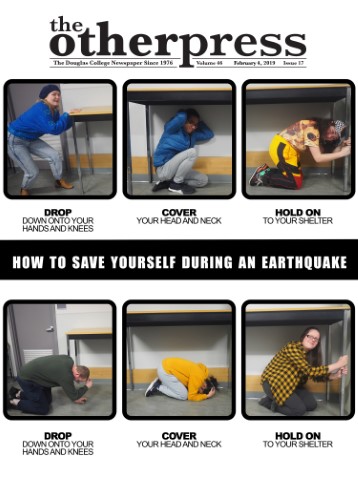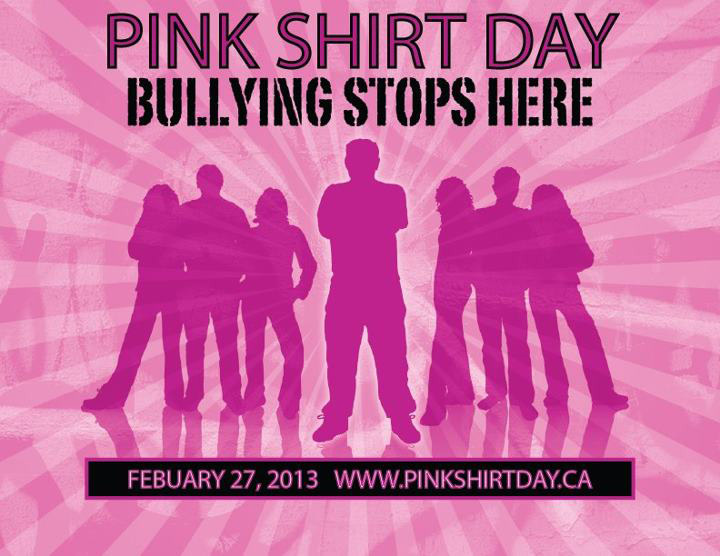
Earthquake preparedness and safety—is Vancouver ready?
By Jessica Berget, Editor-in-Chief
It may not be today, it may not be tomorrow, it may not even be in our lifetime… but an earthquake is coming to British Columbia, and we need to be prepared.
BC is no stranger to earthquakes. In fact, some of the world’s largest earthquakes happen in our province. There is a reported 3,000 earthquakes each year here—though most are too small to be felt—according to the Shakeout BC website. In our southwestern region of BC, it’s more concentrated. We have over 400 earthquakes a year according to Natural Resources Canada. As of recently, there have been many small earthquakes inside and off the coast of BC—ranging in magnitudes as low as 1.2 and 4.5. Just last month a 4.5 earthquake occurred just off the coast of BC and was felt as far as Surrey.
Earthquakes happen frequently in areas where tectonic plates interact, which is exactly why they are so prevalent in our area. We live on a little thing called the Cascadia Subduction Zone—a boundary between two plates of different types, the Juan de Fuca Plate and the North American Plate. The oceanic Juan de Fuca Plate moves beneath the continental North American Plate at about four centimeters per year—around the same rate fingernails grow. All this shifting against each other causes a buildup of stress, and when the buildup between the plates releases… it makes the ground shake.
Earthquakes that occur along the boundary of two tectonic plates stacked on each other (otherwise known as a subduction zone) are called megathrust earthquakes—and these can get up to a magnitude 9… and cause tsunamis! And, as fate has it, we are lucky enough to live right on a subduction zone. Megathrust earthquakes occur every 200 to 800 years, with the last one being recorded on January 26, 1700. According to Vancouver Island First Nations (Huu-ay-aht) account of the event, all 5,000 Loth’a residents in the area were wiped out by the natural disaster. For years, experts have theorized that BC is overdue for a megathrust earthquake and that we should be preparing for the worst. However, some argue against this fact. “The odds of it happening today are small, but the odds of it happening in 500 years is incredibly high,” says Simon Peacock, professor and dean of science at the University of British Columbia.
Yet despite the frequency and probability of earthquakes happening, how many can say they are actually prepared for this event? In British Columbia, only 46 percent of people have purchased or prepared an emergency kit with supplies they might need in case of an unforeseen event. Putting kits aside though, only 39 percent of Canadians have a plan to get in contact with friends and family to ensure their safety, and only 35 percent have a meeting place with their friends and families in case of emergencies. In truth, Vancouver is woefully unprepared for an earthquake. But you know who isn’t? Japan—and I think we can learn a thing or two from them.
Since Japan is much more accustomed to dealing with earthquakes; they have a lot of safety measures and building standards put in place to ensure they are prepared for the next big one. For instance, Japan’s buildings are specifically designed to sway in the case of seismic activity so that less damage is caused. Skyscrapers that are 60 meters high must go through advanced structural analysis and strict approval processes. Newer buildings are complete with anti-earthquake features—like paddings and fluid bases that act as a shock absorber and makes the building sway and move as a pendulum would against the earthquake shakes. By ensuring these building precautions, the amount of injuries and deaths resulting from an earthquake is greatly diminished.
Japan also has many parks designed with special features such as hidden toilets or stove burners that come out during an earthquake, and a special fire brigade designed to take out any fires the earthquake may cause. The Japanese government also advices everyone to stay at home, school, or their workplace if possible, in the event of an earthquake so there is not too much mass movement of more than 5 million people trying to get home. Because of this, businesses must keep three days worth of water, food, and other needs to accommodate people who may be stranded there. The government has also set up temporary shelters with similar supplies for those displaced in the event.
Japan is prepared for the worst because they have had years of experience with devastating earthquakes. In the 1995 Kobe earthquake, many of the buildings that collapsed were not up to the building standards of 1981. Now, about nine in ten buildings meet up to the building standards according to a University of Tokyo study. With the Qube as the only most earthquake resistant building in Vancouver, the prospect of an earthquake occurring in the city causes anxiety for many people.
Seismologist Johanna Wagstaffe warns that when an earthquake comes to our area it will not be pretty.
“A moderate sized earthquake will completely debilitate Vancouver,” she said. “We have to try to think of what we need to live for weeks, maybe months on end.” Though our cities infrastructure may not be prepared for any seismic activity, there are resources to educate people on this very real danger and things we can do to keep ourselves and loved ones prepared and safe.
Shakeout BC is an organization dedicated to educating and preparing people for the event of an earthquake. Each year on the third Thursday of October they host the Great BC Shakedown, going to schools and other institutions to hold earthquake drills. Their website also describes what to do in the case of an earthquake in every scenario.
To prepare for an earthquake in a car, Shakeout BC advises that you move to the shoulder of the road and stay far away from buildings made of glass or masonry since they are subject to breaking and being a huge hazard. Also stay away from bridges and power lines.
To prepare for an earthquake at home, Shakeout BC recommends to move any heavy furniture away from your bed and secure anything that is unstable, so it does not fall and cause injury. In a study by UCLA, 55 percent of injuries in earthquakes were caused by falling debris and furniture. When you feel the ground shaking, it is advised that you drop to the floor to avoid falling over and so you can easily move; cover your head to ensure you do not get hit by any falling debris; and find some cover underneath a table or another sturdy piece of furniture. If there is nothing for you to get under, go to the nearest corner or wall. Wait until the earthquake is over and stay covered and hold on to prepare for the aftershock. If you are inside, stay inside and don’t run into other rooms as most injuries occur because of falling debris. Check yourself and others for injuries and administer first aid as needed. Monitor media for updates or public safety information. If you and your family are safe, put an OK sign in your front window to let authorities know. If your house is unsafe, gather your emergency supplies (and don’t forget your pets and pet supplies if you have any!) and leave to find an evacuation centre.
